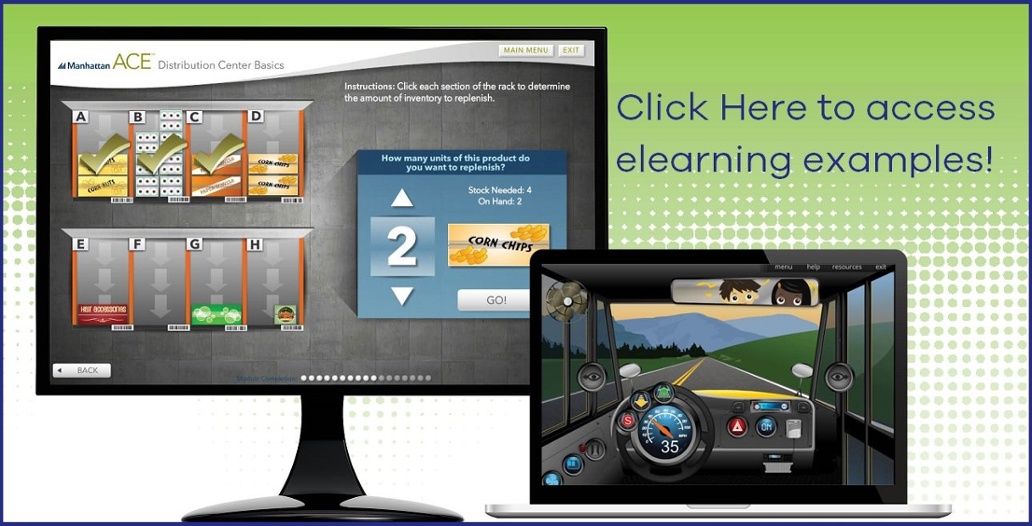Blog
10 Learning Design Blogs to Draw Inspiration From
By Guest Blogger Connie Malamed, Author/Speaker/Writer /@elearningcoach How much effort should you expend on the visual design of an e-Learning ...


Visual Design is More Than Skin Deep
By Connie Malamed | July 28, 2015 | Custom Learning | 0 Comments

By Guest Blogger Connie Malamed, Author/Speaker/Writer /@elearningcoach
How much effort should you expend on the visual design of an e-Learning course or a slide deck? Does it really matter to busy learners if their instructional materials are well designed? The answer is an emphatic, “Yes, it matters.”
Visual design is not just skin deep. Effective visual design provides an aesthetic experience, which evokes a positive emotional response in the user. In the context of learning materials, an aesthetic experience refers to the appreciation of an attractive and usable product. For example, think about the positive feelings you had when you first visited a website that was so well planned, you were able to quickly make a purchase, fill out a form or get the information you wanted without any of the typical frustrations. Although it might be subtle, this type of pleasurable experience can have a powerful impact on the user.

This impact has been validated by research in areas as diverse as marketing, game design, learning, and user experience. Researchers have shown that an aesthetic experience influences a person’s emotions, mental state, attitude, and judgments. The aesthetic experience can also influence learning and problem solving. Two significant perceptions that an aesthetic experience can create are users thinking that a task is easy to do and that a product is easier to use. Let me explain.
It’s Easy To Do
There have been many studies that examine processing fluency or the ease with which a person processes information. In one study, Group 1 subjects were given an easy-to-read recipe and Group 2 subjects had to read a less legible recipe. The majority of study participants who read the recipe that was easy to process thought it would take less time and skill to prepare the food than those who read the difficult-to-read recipe. They also thought they could follow the recipe by themselves. Group 2 participants thought the recipe would require more skill and time to prepare than those in Group 1. They also thought it would be difficult to manage preparing the food alone (Song & Schwarz, 2008).
Accordingly, don’t we all want our learners to feel positive about the new skills and knowledge they are attempting to acquire? Don’t we want them to enjoy the experience so they feel that learning is “easy to do?”
In the context of visual design, some ways you can ensure that your e-Learning screens and training slides are easy to process are to:
- Reduce the quantity of information on each screen
- Ensure the design is uncluttered and use ample white space.
- Strive for appealing colors, text with spacing that is easy to read, sufficient contrast, and consistency or unity in design.
It Works Better
Two widely cited studies discussed in Donald Norman’s book, Emotional Design (2003), relate how people perceive attractive products as easier to use. In the study, two ATM screens were designed to have identical functions and buttons. The only difference was that the design of one ATM screen was attractive and the other was intentionally unattractive.
The results showed that subjects perceived the attractive screen as easier to use. Participants even encountered fewer difficulties with the attractively designed ATM. The researchers concluded that there is a correlation between beauty and function.
Norman attributes this correlation to the ex panded mental state that positive emotions afford. Research shows that a positive affect promotes flexibility in thinking, which fosters creativity and problem solving (Isen, 2010).
Again, isn’t this the experience e-Learning instructional designers hope to achieve? We want to create experiences that enhance cognition and encourage creative thought and problem solving. And one way to do this is to provide learners with a pleasurable aesthetic experience achieved by applying sound principles of visual design.
In summary, attributes and factors related to aesthetics—often perceived beneath the level of awareness—affect the emotional response of the audience. Visual design provides us with an opportunity for ensuring the learning experience is a positive one.
References:
- Isen, A. M. (2010). Some ways that positive affect influences decision making and problem solving. In M. Lewis & J. M. Haviland (Eds.), Handbook of Emotions, pp.548-573. New York: Guilford.
- Song, H. & Schwarz, N. (2008). If it’s hard to read, it’s hard to do: Processing fluency affects effort prediction and motivation. Psychological Science, 19, 986–988.
About Connie:
Connie Malamed consults, speaks and writes in the fields of instructional, visual, and information design. She is the author of Visual Design Solutions: Principles and Creative Inspiration for Learning Professionals and Visual Language for Designers: Principles for Creating Graphics That People Understand. Connie publishes the website The eLearning Coach and produces The eLearning Coach Podcast. You can connect with her on Twitter at @elearningcoach.
WANT TO SHARE THIS BLOG? CLICK THIS READY-MADE TWEET BELOW!
CLICK TO TWEET: #Visual #Design is More Than Skin Deep by @elearningcoach http://hubs.ly/H010ZfG0 #aiblog @customelearning
About the Author: Connie Malamed
Comments
Would you like to leave a comment?
Related Blog Posts

By: Connie Malamed | Jan, 2016
Category: Custom Learning, Strategic Consulting

Blog
Moving from Instructional Design —> Learning Experience Design
By Guest Blogger Connie Malamed, Author/Speaker/Writer /@elearningcoach How much effort should you expend on the visual design of an e-Learning ...
By: Connie Malamed | Jun, 2020
Category: Custom Learning, Strategic Consulting

Blog
3 Key e-Learning Design Steps From Pixar's Design Story
By Guest Blogger Connie Malamed, Author/Speaker/Writer /@elearningcoach How much effort should you expend on the visual design of an e-Learning ...
By: Connie Malamed | Jan, 2016
Category: Custom Learning, Strategic Consulting


